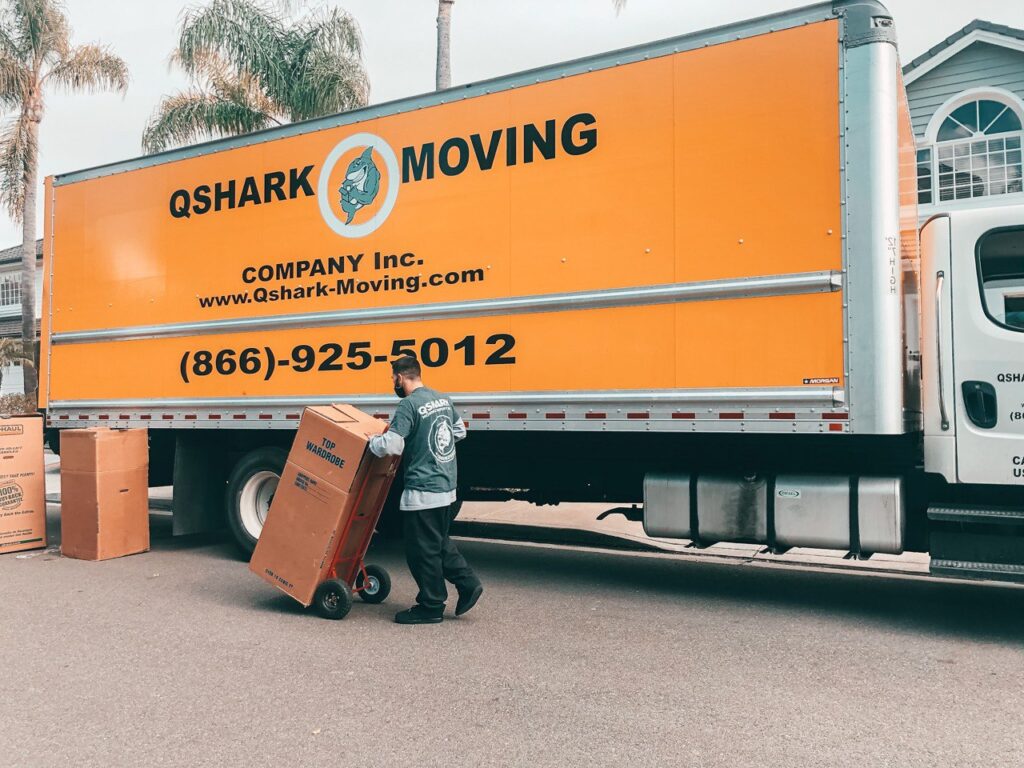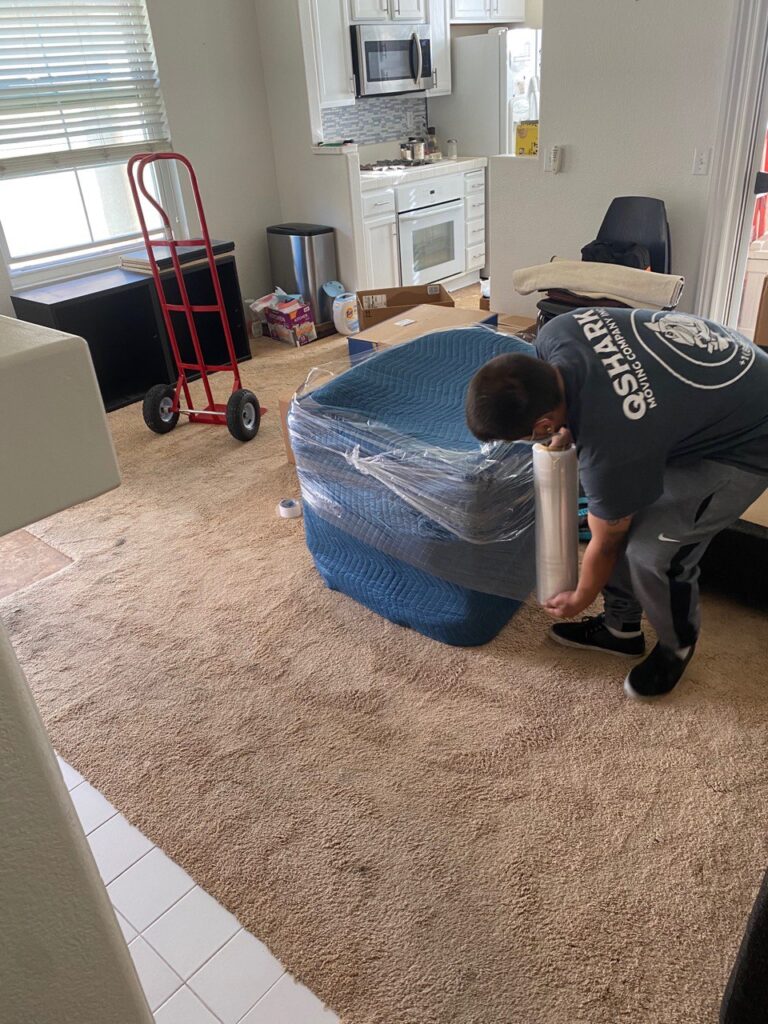
How To Pack For Movers?
Welcome to QShark Moving Company’s all-encompassing guide on how to pack for a move! Whether you are making use of our top-tier moving service, considering our professional packing services, or simply seeking some expert guidance, you are in the right place. In this guide, we aim to address every detail related to packing for a move, providing you with the information you need to ensure a smooth transition to your new home. Now we will learn how to pack for movers.
With QShark Moving Company, you have found your best movers in Southern California. Our services range from local moving to long distance moves, and include specialized services like office moving and piano moving. Regardless of the nature of your move, our ultimate goal is to alleviate your stress and make the moving process as seamless as possible.
“At QShark Moving Company, we believe that a successful move begins with careful and strategic packing.”
In this guide, we will walk you through the following:
- Initial Preparation for Packing
- Understanding Different Types of Items
- A Detailed, Step-by-step Packing Guide
- Effective Labeling and Organization of Boxes
- Special Considerations for Packing
- Preparation for Moving Day
- An Overview of QShark Moving Company’s Packing Services
- FAQs, Resources, and References
Whether you’re one of our cherished Orange County Movers, or looking for reliable Movers in San Diego or Irvine Movers, this guide aims to be a valuable resource.
Moreover, QShark Moving Company is not just a moving company; we strive to be your trusted partner in the moving process. If you need extra assistance, remember that we also offer day labor to help with packing and other tasks.
Pack your worries away as you embark on your journey with QShark, your professional movers. With our dedicated team, you’ll experience moving at its best, even if you are on a budget and looking for cheap movers. Let’s get started with our comprehensive packing guide!
Initial Preparation for Packing
The key to a successful move is thorough planning and preparation. It’s best to begin your moving process by planning everything in advance. Here are the steps you can take:
1. Creating a Moving Checklist
- Outline all the tasks that need to be completed prior to your move.
- Set a timeline for when each task should be finished.
- Keep the list flexible and open for changes as required.
- Regularly update your list as tasks are completed.
2. Tools and Materials for Packing
Before you start packing, gather all the necessary packing supplies. Here’s a list of items you might need:
- Cardboard boxes in various sizes.
- Heavy-duty boxes for heavier items.
- Packing tape.
- Bubble wrap for fragile items.
- Old newspapers or packing paper.
- Stretch wrap for furniture.
- Markers for labeling boxes.
- Scissors or box cutters.
3. Taking Inventory
Take stock of everything you own. This helps in many ways:
- Determines the number and size of boxes you’ll need.
- It helps identify items that need special care or packing techniques.
- Assists in unpacking and arranging items in your new home.
- Useful for insurance purposes.
4. Deciding What to Keep, Donate, Sell, or Dispose Of
Moving is an excellent opportunity to declutter. Evaluate every item and decide if it’s worth the space and effort to pack and move. Consider the following for each item:
- Keep: Things that are of value, often used, or have sentimental value.
- Donate: Items in good condition that are not often used. Consider giving these to friends, family, or charity.
- Sell: Items that are valuable but not needed can be sold online or in a yard sale.
- Dispose of: Items that are neither usable nor sellable.
Remember, the less you have to pack, the easier your move will be. With these initial preparation steps, you are ready to start packing. The following sections will guide you through the process. Let’s get packing with your top movers at QShark Moving Company!
Understanding Different Types of Items
When packing for a move, understanding the different types of items in your household and how they should be packed can help prevent damage and make the unpacking process easier. Let’s categorize the typical household goods and discuss the ideal packing approach for each:
- Fragile Items: These include items like glassware, china, decorative pieces, picture frames, and electronics. They require special handling and should be packed with care using sufficient protective materials like bubble wrap, foam peanuts, or packing paper.
- Large Furniture: Furniture can be bulky, heavy, and difficult to move. It might be necessary to disassemble some pieces for easier transport. Items such as beds, tables, bookshelves, and couches fall into this category.
- Clothing: Clothes are typically easy to pack, but certain items like suits, dresses, or coats might need extra care to prevent wrinkles or damage.
- Books and Documents: While these might not be fragile, books can become quite heavy when packed together. They require sturdy boxes and careful handling.
- Outdoor and Garage Items: These can include a variety of items like tools, gardening equipment, outdoor furniture, and potentially hazardous materials such as fertilizers or paint.
By recognizing these categories, you can apply the best packing practices for each type, ensuring your belongings safely reach your new home. Continue reading for our detailed, step-by-step packing guide to learn the best ways to pack each type of item with your best movers at QShark Moving Company!

Step-by-step Packing Guide
Now that we’ve classified our items, let’s dive into the step-by-step process of packing them.
Packing Fragile Items
Protecting your delicate items is of utmost importance during a move. Follow these steps to ensure they arrive safely at your destination.
Materials Needed
- Bubble wrap
- Packing paper
- Packing tape
- Sturdy boxes
- Marker for labeling
Packing Process
- Start by lining your box: Before you put anything in your box, line the bottom with a layer of bubble wrap or crumpled packing paper for added cushioning.
- Wrap each item individually: Using bubble wrap or packing paper, wrap each fragile item individually. Secure the wrap with packing tape.
- Place items in the box: Start by placing the heaviest items at the bottom of the box. Build layers with lighter items on top.
- Fill empty spaces: Fill any gaps in the box with crumpled packing paper or additional bubble wrap to prevent items from shifting during the move.
- Close and secure the box: Close it well with packing tape once it is packed. Shake the box gently to ensure nothing moves.
- Label the box: Use a marker to label the box with its contents and the room it belongs to. Don’t forget to write “FRAGILE” on all sides.
Packing Large Furniture
Moving large furniture can be a challenge, but with the right approach, you can ensure it’s done smoothly and safely.
Materials Needed
- Furniture covers or moving blankets
- Plastic stretch wrap
- Packing tape
- Tools for disassembling furniture, if needed
Packing Process
- Clean and empty the furniture: Ensure all furniture is clean and free of personal items. Remove cushions, drawers, and shelves if possible.
- Disassemble, if possible: If a piece of furniture can be taken apart, do so. This can make it easier to transport and prevent damage. Remember to keep all screws, bolts, and other hardware in a labeled bag.
- Wrap the furniture: Use furniture covers or moving blankets to wrap the pieces. Secure with plastic stretch wrap or packing tape.
- Secure any moving parts: If a furniture item has any moving parts, make sure they are secured with packing tape.
Remember, if you need help with heavy furniture, our day labor service can provide assistance. Continue reading our step-by-step packing guide to learn how to handle clothing, books, documents, and outdoor items for your move with QShark, your professional movers.
Packing Clothes
Clothing can be packed in several ways depending on the type of garment and your preferences.
Materials Needed
- Cardboard boxes or suitcases
- Wardrobe boxes for hanging clothes
- Vacuum bags for bulky items
Packing Process
- Sort and declutter: Separate your clothes into categories (e.g., shirts, pants, undergarments). This is a great opportunity to declutter, donate, or sell items you no longer want or need.
- Use wardrobe boxes for hanging clothes: These special boxes allow you to move clothes on hangers directly from your closet to the box, reducing wrinkles and the time spent packing and unpacking.
- Roll clothes to save space: Use the rolling method instead of folding for clothes that are not hung up. This technique saves space and can reduce wrinkles.
- Use suitcases: Make use of suitcases you already have. They are ideal for packing clothes and are easy to move.
- Use vacuum bags for bulky items: Bulky items like coats and sweaters take up a lot of space. Vacuum bags can compress these items, making them easier to pack and transport.
Packing Books and Documents
Books and documents can be heavy and may require special care to prevent damage during the move.
Materials Needed
- Small, sturdy boxes
- Packing paper
Packing Process
- Sort and declutter: Before packing, go through your collection and decide which books and documents you really need to keep.
- Use small boxes: Books are heavy, so use small boxes to make them easier to lift and prevent the box’s bottom from breaking.
- Pack books flat or spine down: Pack your books flat or spine down to prevent damage to the spines.
- Fill gaps with packing paper: Any extra space in the box should be filled with packing paper to prevent books from moving and getting damaged.
Packing Outdoor and Garage Items
Outdoor and garage items can be tricky to pack due to their size, shape, and potential hazards.
Materials Needed
- Boxes and packing tape
- Bubble wrap for delicate items
- Trash bags for lightweight items
Packing Process
- Drain fuel from equipment: If you’re packing machinery like lawnmowers or chainsaws, drain the fuel before you move.
- Use original packaging when possible: If you still have the original packaging for tools or other garage items, use it. The original packaging is often the safest way to transport these items.
- Secure sharp objects: For tools with sharp edges or points, make sure these are well secured to prevent injuries.
- Label hazardous materials: If you’re moving items like paint, fertilizer, or other potentially hazardous materials, make sure they’re clearly labeled.
With all items safely packed, we can organize, label, and prepare for moving day with your top movers at QShark Moving Company!
Effective Labeling and Organization of Boxes
Labeling and organizing your boxes efficiently will make the unpacking process a breeze. Here’s how to do it:
Materials Needed
- Different colored markers
- Label stickers or plain paper and tape
- A notebook or moving inventory sheet
Labeling Process
- Label each box: Write a general description of the contents and the room it belongs to on the top and side of each box. Make sure the label is visible even when boxes are stacked.
- Use color-coding: Assign each room a different color and use markers of that color for labeling. This system can speed up the unloading process as it is clear where each box should go at a glance.
- Number your boxes: Number each box and keep a detailed inventory. This will help you ensure no box gets lost in the move and will also be useful when deciding which box to unpack first.
- Indicate handling instructions: Use labels or clear written instructions for boxes containing fragile items, liquids, or heavy items. Indications like ‘Fragile’, ‘This side up’, or ‘Heavy’ can be very helpful.
Organization Process
- Keep a detailed inventory: Document the contents of each box in a notebook or on an inventory sheet. This will not only help ensure nothing gets lost, but it can be a lifesaver when you’re unpacking and can’t remember where a particular item is.
- Pack rooms separately: If possible, pack and stack boxes by room. This way, when you arrive at your new home, you can easily place the boxes in their respective rooms, making the unpacking process much easier.
- Consider essential items: Pack an ‘open first’ box with essential items that you will need immediately upon arrival at your new home, such as toiletries, a change of clothes, snacks, etc.
With your items packed and organized, you’re almost ready for moving day. Just a few more steps and tips to ensure everything goes smoothly with QShark, your best movers!
Preparing for Moving Day
The day before your move, there are a few last-minute preparations to take care of. These steps will ensure moving day goes as smoothly as possible.
Materials Needed
- Personal items and important documents
- Contact information for your moving company
Preparation Steps
- Confirm arrangements with your moving company: Double-check the time, date, and location with your moving company. Make sure you have the contact information for the moving day representative.
- Prepare essential items: Pack a bag of personal items you will need during the move, such as medications, chargers, snacks, and water. Don’t forget important documents, like your ID, moving documents, and lease or home purchase documents.
- Do a final walk-through: Check each room one last time to make sure nothing has been left behind. Look in all cupboards, closets, and behind doors.
- Clean and secure your home: Clean your house or apartment, take out the trash, and make sure all windows and doors are locked.

Moving Day Tips
Moving day can be stressful, but we can help it go smoothly with some additional tips.
- Be available to guide the movers: Whether you’ve hired professional movers or are getting help from friends, it’s important to be available to direct them. Clearly communicate where each box should go in your new home.
- Protect your home: Cover floors to avoid scratches and dirt, and remove door and window screens if needed to protect them and create more space for moving large items.
- Check the inventory list: As the truck is being loaded, check off the boxes and items from your inventory list.
- Have payment ready: If you’ve hired movers, make sure you understand the payment terms and have payment ready.
- Take care of your movers: Whether they’re friends or professionals, make sure everyone is hydrated and fed. A happy moving crew makes for a smoother move!
And there you have it – your comprehensive, step-by-step guide to packing for a move. Now you’re ready to get moving with QShark Moving Company, your top choice among Orange County movers!
Remember, we’re here to help make your move as easy as possible. Whether you need local moving or long-distance movers, office moving or piano movers, or just some extra help with packing services, QShark Moving Company has you covered. Safe travels!
Conclusion
Congratulations! If you’ve followed this comprehensive guide, you’re now well-prepared for your upcoming move. Packing is an integral part of the moving process, and with careful planning and organization, it can be a smooth, manageable task.
Remember, moving is more than just transporting items from one location to another. It’s about relocating your life, with all its precious memories and cherished possessions. That’s why at QShark Moving Company, we’re committed to providing a moving service that’s not just about physical logistics but also about understanding and respecting the value each item holds for you.
Whether you’re looking for Irvine Movers or Movers in San Diego, remember that our goal is to provide the best moving experience for you.
Best of luck with your move, and remember, QShark is here to make your moving process hassle-free and efficient. Contact us today to learn more about how we can help you embark on this new journey!


